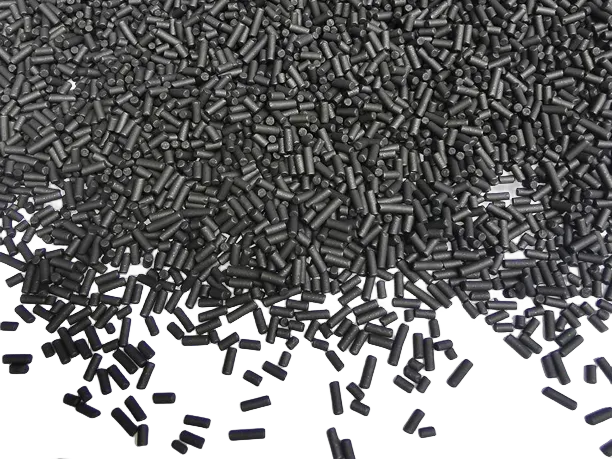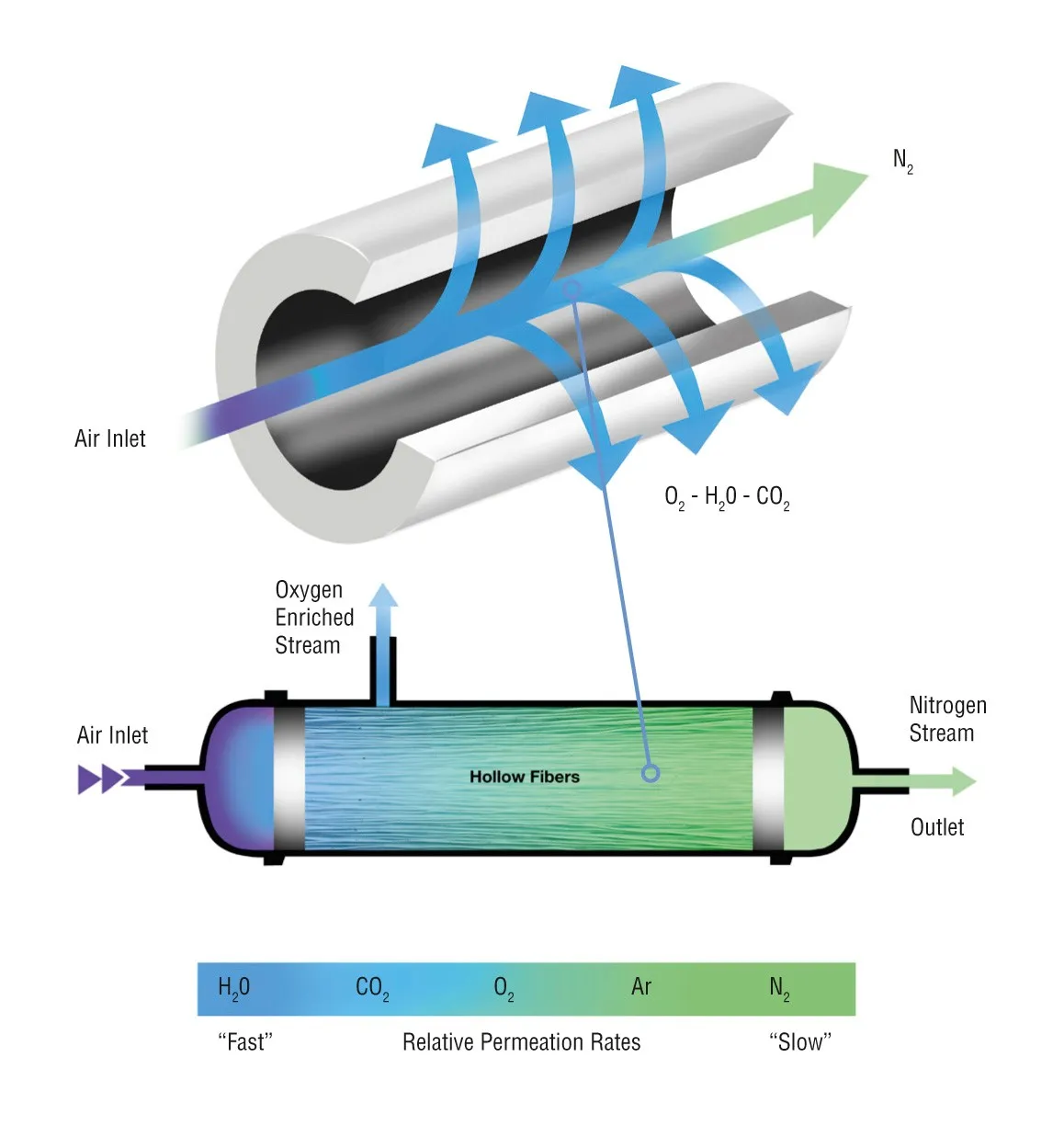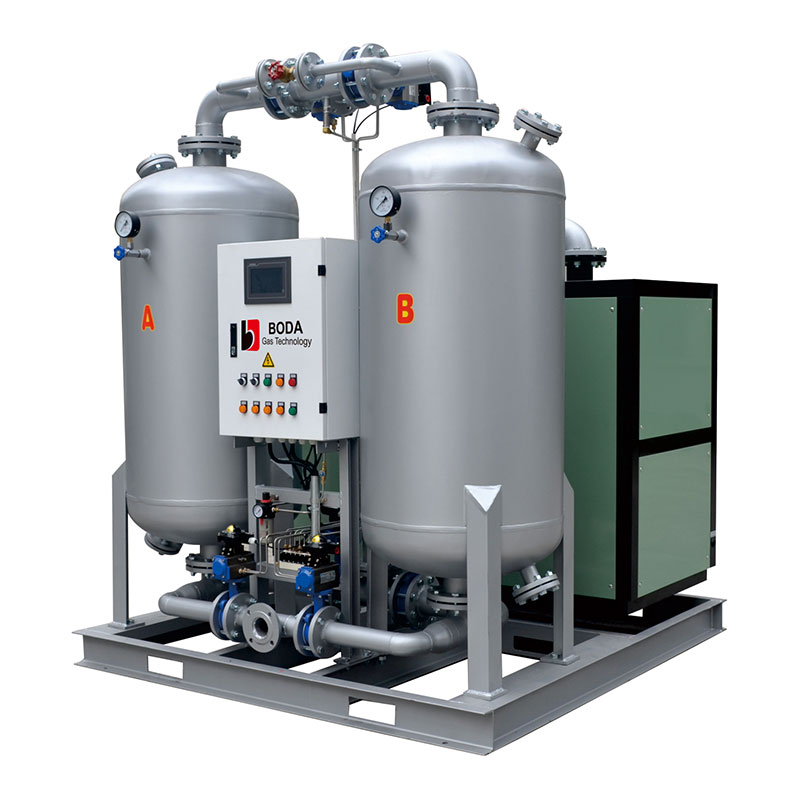Two popular technologies for obtaining nitrogen are PSA (Pressure Swing Adsorption) and membrane separation. But how do you decide which method is better suited for your required nitrogen purity?
PSA systems are ideal for applications that require very high purity of nitrogen, while membrane systems are better suited for applications that require high capacity at lower purities.
Choosing the right nitrogen generation technology is crucial for achieving the desired purity and capacity at optimal cost. PSA and membrane systems each have unique advantages, making them ideal for different applications. Read on to explore the details and make an informed choice for your needs.
| Item | PSA | Membrane Separation | Note |
| ✔Medium |  |
 |
|
| ✔Purity | Up to 99.9995% | Up to 99.5% | Pressure swing adsorption can achieve much higher purity than membrane separation technology |
| ✔Capacity | 5~3000Nm³/h | 5~1000Nm³/h | When the flow rate is small, the membrane separation space is dominant, and if the flow rate is large,
it should be the pressure swing adsorption of the molecular sieve that is more dominant. |
| ✔Dew point | Good sealing | General | The water removal capacity of pressure swing adsorption is better than that of membrane separation |
| ✔Maintence | Relatively cumbersome | Easy to operate | Membrane separation technology has few moving parts and therefore simple maintenance |
| ✔Noise | ≤85dB | ≤85dB | Depends the air compressor |
What is a PSA Nitrogen Generator?
A PSA nitrogen generator operates using the principle of pressure swing adsorption. The system consists of two towers filled with carbon molecular sieves. Compressed air is passed through the sieves, where oxygen and other impurities are adsorbed, allowing nitrogen to flow through as the primary product. The towers alternate between adsorption and regeneration cycles, ensuring a continuous supply of high-purity nitrogen, often exceeding 99.999% purity. PSA nitrogen generators are highly efficient and provide stable performance for industries requiring ultra-pure nitrogen, such as electronics, pharmaceuticals, and food packaging. They also allow adjustable flow rates and pressures, ensuring flexibility for various industrial applications.
What is a Membrane Nitrogen Generator?
A membrane nitrogen generator separates nitrogen from compressed air using a selective permeation process. The system employs hollow fiber membranes that allow oxygen, water vapor, and other gases to pass through more quickly than nitrogen. This results in a nitrogen-rich stream with purity levels typically ranging between 95% and 99.5%. Membrane nitrogen generators are compact, energy-efficient, and low-maintenance. They are especially suitable for applications requiring moderate nitrogen purity, such as inerting, fire prevention, and tire inflation. Their quiet operation and small footprint make them ideal for on-site installations, even in limited spaces.
PSA vs. Membrane Nitrogen Generator
The choice between PSA and membrane nitrogen generators depends on factors such as required purity, capacity, and operating conditions. PSA systems are preferred for high-purity applications, providing nitrogen purity levels of up to 99.999%. They are cost-effective for larger-scale operations and are capable of handling high flow rates with consistent quality. On the other hand, membrane systems are better suited for applications where moderate purity (up to 99.5%) suffices. They have lower initial costs and require minimal maintenance, making them ideal for low-capacity, cost-sensitive operations. While PSA systems are more energy-intensive, they offer better adaptability for high-purity requirements.

Important Differences between PSA and Membrane Nitrogen Generators
The fundamental difference lies in the working principle: PSA relies on adsorption, while membrane technology uses selective permeation. PSA nitrogen generators typically achieve higher purity levels and are more versatile for industries demanding stringent nitrogen standards, such as food packaging and pharmaceuticals. Conversely, membrane nitrogen generators excel in simplicity and energy efficiency, making them suitable for less demanding applications such as blanketing or inerting.
PSA systems require periodic maintenance for components like molecular sieves, but their longevity and output consistency justify the investment. Membrane systems, being free of moving parts, have significantly lower maintenance demands but may face limitations in purity and scalability. Space availability and operational noise are other factors; membrane systems are compact and quieter, while PSA systems may need larger installations and generate higher noise levels due to compressors.
Conclusion
PSA and membrane nitrogen generators each have unique advantages. Understanding your specific nitrogen requirements will help you choose the best solution for your operations.




